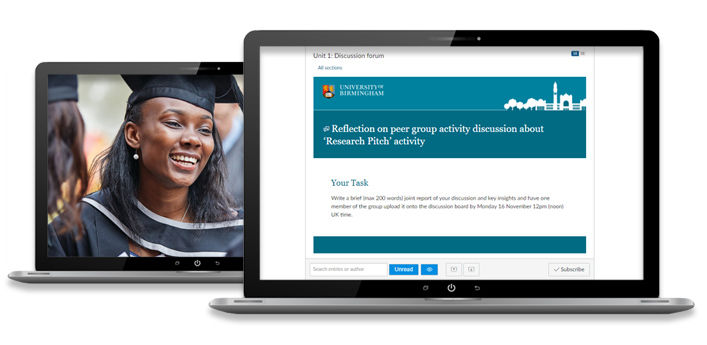Learning Design for Student Retention
November 2020 - Helen Brown and Kabir Ganguly
Student retention is a topic that many institutions are having to address like never before due to warnings about high drop-out rates as a result of Covid-19.
University of Birmingham Distance Learning programmes experience a retention rate of 93% which is remarkably high for fully online programmes. This is because a systematic and coherent framework has been deployed in the learning design process to maintain student engagement throughout the course.
Retention is a complex issue; dropping out of University can have both financial and emotional implications for students but also have a reputational impact on the institution. Here in Educational Enterprise, we’ve seen a range of approaches to designing for retention through working with our online learning partners Wiley, Future Learn and Open University. Educational Enterprise learning designers use similar principles and always have student engagement and experience at the centre of a module design.
'ICEBERG' model for student retention
One very helpful model is the Open University developed ‘ICEBERG’ model. They believe that effective design for student retention involves a curriculum which is:
- Integrated – all learning materials and assessments align with the course learning outcomes
- Collaborative – helps students engage in ‘deep learning’ and be part of the academic community
- Engaging – course material matches student interests and aligns with their career aspirations
- Balanced – an evenly distributed workload between units
- Economical – course material is all relevant and provides a clear critical path to success
- Reflective – formative activities provide opportunities for students to get feedback about their progress which helps keep them engaged
- Gradual – learners can incrementally build on what they already know instead of being overwhelmed by complex topics
How Educational Enterprise design for retention
EE’s design processes are structured to address all elements of the ICEBERG model. Our learner journey mapping process ensures that learning activities align with the learning outcomes and that there are a clear structure and balance of workload for each unit. We refer to the most recent research about student engagement e.g. the optimum duration for an educational video. The ‘ICEBERG’ model builds on the Tinto (1975) Student Integration Model which demonstrates that both social and academic integration are the key factors when it comes to student retention.

In the design of our online courses, we aim to increase social interaction by using well thought through discussion forums and collaborative tasks. We aim to address academic integration by including formative activities throughout a module, this provides the student with feedback about their progress and understanding of course content.